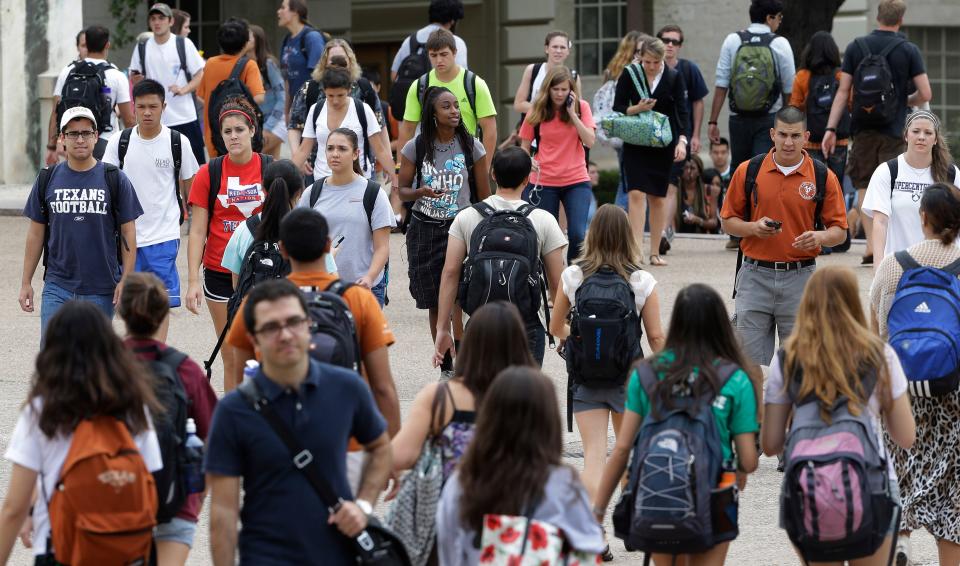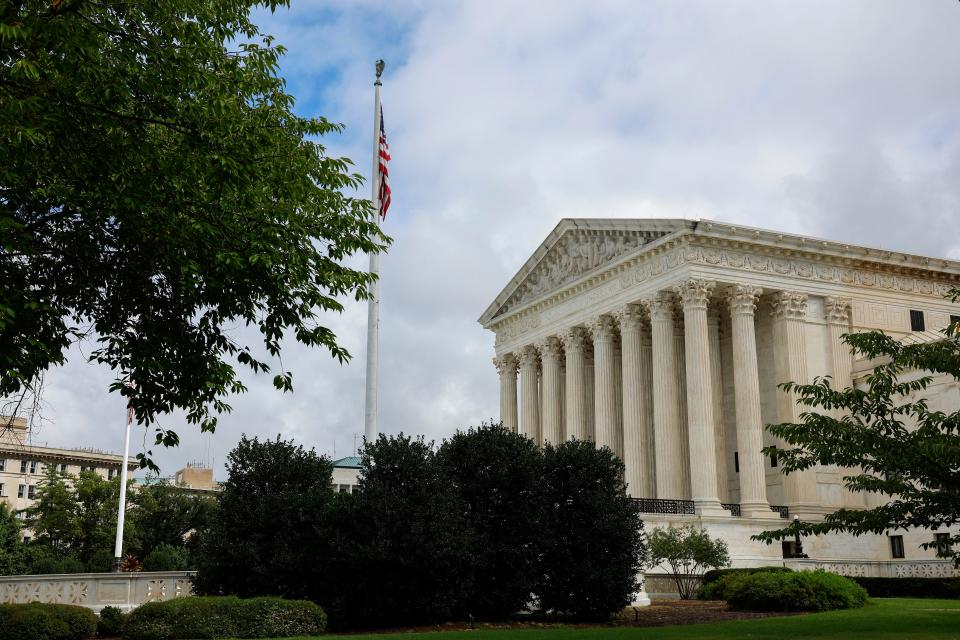Supreme Court's affirmative action cases could affect hiring, employment
WASHINGTON – Two pivotal affirmative action cases pending at the Supreme Court this term that deal with college admissions are being closely watched by private employers who fear a sweeping decision could undermine corporate diversity programs.
The high court will hear oral arguments Oct. 31 in challenges to the way Harvard University and the University of North Carolina consider race in their admissions processes. The lawsuits were filed by an anti-affirmative action group that asserts the policies discriminate against Asian Americans and white candidates.
Though the questions raised by the litigation are limited to higher education, experts say that a broad ruling that curbs affirmative action on American campuses could have a ripple effect on diversity and inclusion programs that have proliferated in the private sector, especially since the emergence of the Black Lives Matter movement.
Explainer: Supreme Court to consider use of race in college admissions
Companies: U.S. firms back Harvard, UNC in Supreme Court affirmative action cases
"Everybody sees the writing on the wall," said Susan Carle, a law professor at American University who teaches about civil rights and employment discrimination.
"And it's a strange time because at the same time, both the #MeToo movement in the gender context, but especially the Black Lives Matter movement, have made a lot of people more conscious of all the subtle ways people of color are disadvantaged in the workplace," Carle said. "And employers have really wanted to do something about it."
If the Supreme Court bans race consciousness in university admissions, "there may be a chilling effect on both affirmative action in the public sector and diversity and inclusion programs in the private sector, as companies fear additional reverse discrimination claims and compliance issues," said Kai McGintee, a Portland, Maine-based attorney who specializes in employment and higher education law.
By accepting the cases at all, the Supreme Court has added a highly polarizing issue to its docket – and another chance to unwind precedent – just months after it overturned its 1973 Roe v. Wade decision that established a constitutional right to abortion. Polling indicates a majority of Americans back the goal of affirmative action broadly but that the support declines significantly when pollsters ask about taking race into account.
Diversity, equity and inclusion programs are now "a given" in the private sector, according to a brief filed in the affirmative action litigation on behalf of some of the nation's largest employers. By 2011, 97% of global companies reported formal strategies to foster diversity, according to a Forbes Insights survey cited in that brief.

"Racial and ethnic diversity enhance business performance," the companies – including Apple, General Electric, Google and Starbucks – told the high court in August. "Research and experience demonstrate that racial diversity improves decision-making by increasing creativity, communication, and accuracy within teams."
Affirmative action in university admissions has been a target of conservatives for decades but the court upheld such policies in 1978, 2003 and 2016.
In the 2003 decision, a 5-4 majority of the Supreme Court approved the University of Michigan Law School's use of affirmative action. In an opinion written by Associate Justice Sandra Day O'Connor, the court reasoned that the school had a compelling interest in ensuring a diverse campus and that the way it considered race was limited, using it only as a "plus factor" in an otherwise individualized assessment.
Keep the faith: Kagan warns the Supreme Court must 'act like a court'
Criticism: Roberts defends Supreme Court's legitimacy post-Roe
The court has ruled that to achieve the educational benefits of student-body diversity, universities may consider race as one factor among many in a full, individualized evaluation of each applicant’s background, experiences and potential contributions to campus life. In the Harvard case, the U.S. Court of Appeals for the 1st Circuit in Boston ruled in 2020 that Harvard permissibly used race under that rubric.
But in a line often quoted by critics of affirmative action policies, O'Connor wrote in the 2003 opinion that the majority of the court expected "that 25 years from now, the use of racial preferences will no longer be necessary to further the interest approved today."
Not only is O'Connor's 25-year horizon quickly approaching, the composition of the Supreme Court has changed significantly since then, with conservatives holding a 6-3 advantage for the first time in decades. Adding to the sense that such policies are on shaky ground: Chief Justice John Roberts, often seen as the court's ideological center, has opposed affirmative action policies at other universities.
Roberts, in other words, has been on the same page as the court's more stalwart conservatives, such as Associate Justices Clarence Thomas and Samuel Alito.
"What is at stake is whether university administrators may justify systematic racial discrimination simply by asserting that such discrimination is necessary to achieve 'the educational benefits of diversity,'" Alito wrote in 2016 in a dissent joined by Roberts and Thomas. The University of Texas at Austin policy at issue in that lawsuit, he said, was based on "unsupported and noxious racial assumptions" about the ability of minority students to compete in a race-neutral admissions process.

Perhaps sensing the shifting landscape, the two lawsuits filed by Students for Fair Admissions, an anti-affirmative action group founded by conservative legal strategist Edward Blum, ask the high court to decide whether the 2003 precedent should be overruled. In the case of University of North Carolina, a public institution, the group argues the equal protection clause of the 14th Amendment bars consideration of race in college admissions just as the court found it bars segregation in public schools in its landmark Brown v. Board of Education decision.
"The same Fourteenth Amendment that required public schools to dismantle segregation after Brown cannot be cowed by the diktats of university administrators," the group told the Supreme Court in the case.
In the Harvard suit, the group is relying in part on Title VI of the Civil Rights Act of 1964, which prohibits entities that receive federal funding from discriminating on the basis of race, color or national origin. Title VII of that same act bars discrimination based on race and other factors in the workplace. A decision under Title VI impacting affirmative action would likely prompt a new wave of litigation under Title VII challenging racial preferences in the workplace.
"There absolutely will be spillover," said Stacy Hawkins, a vice dean and law professor at Rutgers University who specializes in employment law and diversity. "There has always been spillover between the court's affirmative action cases in the higher education context and the use of race in hiring and employment."
That said, hiring and promotion at a company is a different endeavor than college admissions, Hawkins said, in part because those decisions are often inherently individualized. Companies, generally, are not hiring thousands of people at a time for a similar position in the same way universities admit an entire class at once. It's much easier, she said, for private companies to stay within the boundaries set by the court.
Exactly how the outcomes in the two cases may affect companies remains to be seen.
The court is expected to rule in both cases next year.
This article originally appeared on USA TODAY: Supreme Court affirmative action cases could affect workplace next

 money
money 